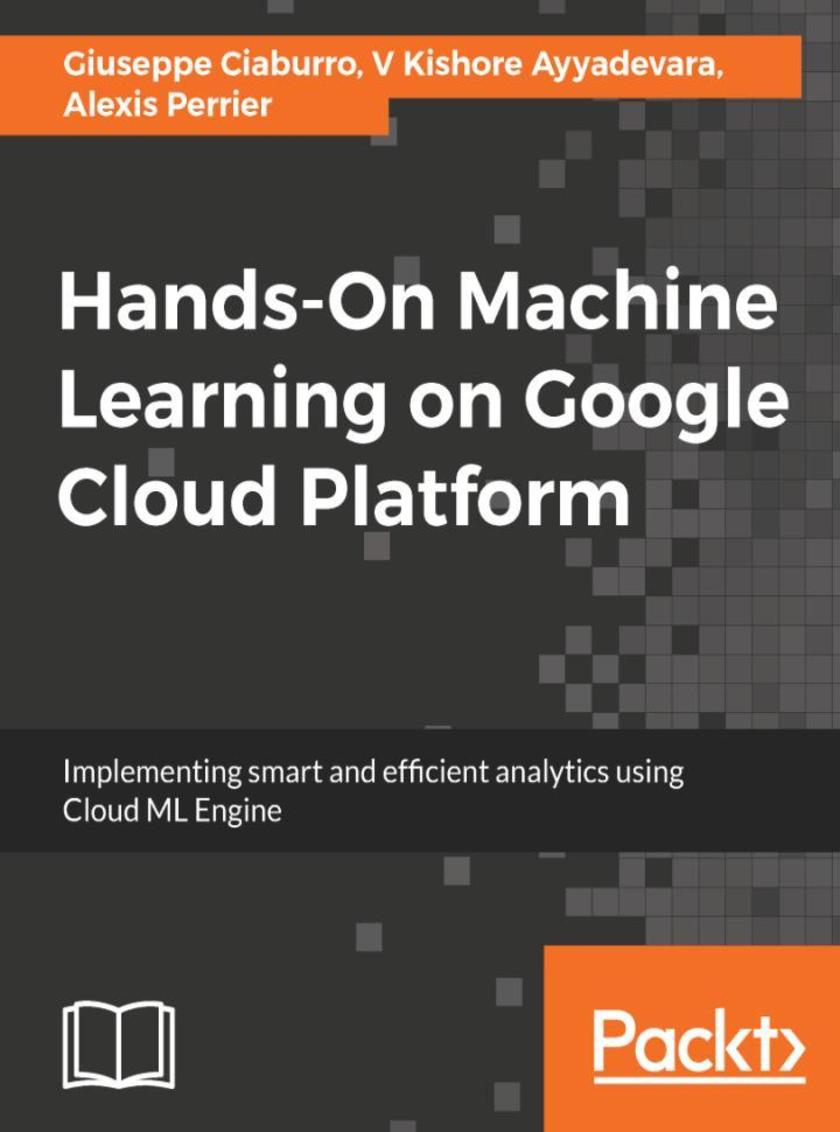
Hands-On Machine Learning on Google Cloud Platform
¥81.74
Unleash Google's Cloud Platform to build, train and optimize machine learning models About This Book ? Get well versed in GCP pre-existing services to build your own smart models ? A comprehensive guide covering aspects from data processing, analyzing to building and training ML models ? A practical approach to produce your trained ML models and port them to your mobile for easy access Who This Book Is For This book is for data scientists, machine learning developers and AI developers who want to learn Google Cloud Platform services to build machine learning applications. Since the interaction with the Google ML platform is mostly done via the command line, the reader is supposed to have some familiarity with the bash shell and Python scripting. Some understanding of machine learning and data science concepts will be handy What You Will Learn ? Use Google Cloud Platform to build data-based applications for dashboards, web, and mobile ? Create, train and optimize deep learning models for various data science problems on big data ? Learn how to leverage BigQuery to explore big datasets ? Use Google’s pre-trained TensorFlow models for NLP, image, video and much more ? Create models and architectures for Time series, Reinforcement Learning, and generative models ? Create, evaluate, and optimize TensorFlow and Keras models for a wide range of applications In Detail Google Cloud Machine Learning Engine combines the services of Google Cloud Platform with the power and flexibility of TensorFlow. With this book, you will not only learn to build and train different complexities of machine learning models at scale but also host them in the cloud to make predictions. This book is focused on making the most of the Google Machine Learning Platform for large datasets and complex problems. You will learn from scratch how to create powerful machine learning based applications for a wide variety of problems by leveraging different data services from the Google Cloud Platform. Applications include NLP, Speech to text, Reinforcement learning, Time series, recommender systems, image classification, video content inference and many other. We will implement a wide variety of deep learning use cases and also make extensive use of data related services comprising the Google Cloud Platform ecosystem such as Firebase, Storage APIs, Datalab and so forth. This will enable you to integrate Machine Learning and data processing features into your web and mobile applications. By the end of this book, you will know the main difficulties that you may encounter and get appropriate strategies to overcome these difficulties and build efficient systems. Style and approach An easy-to-follow step by step guide which will help you get to the grips with real-world applications of Google Cloud Machine Learning.
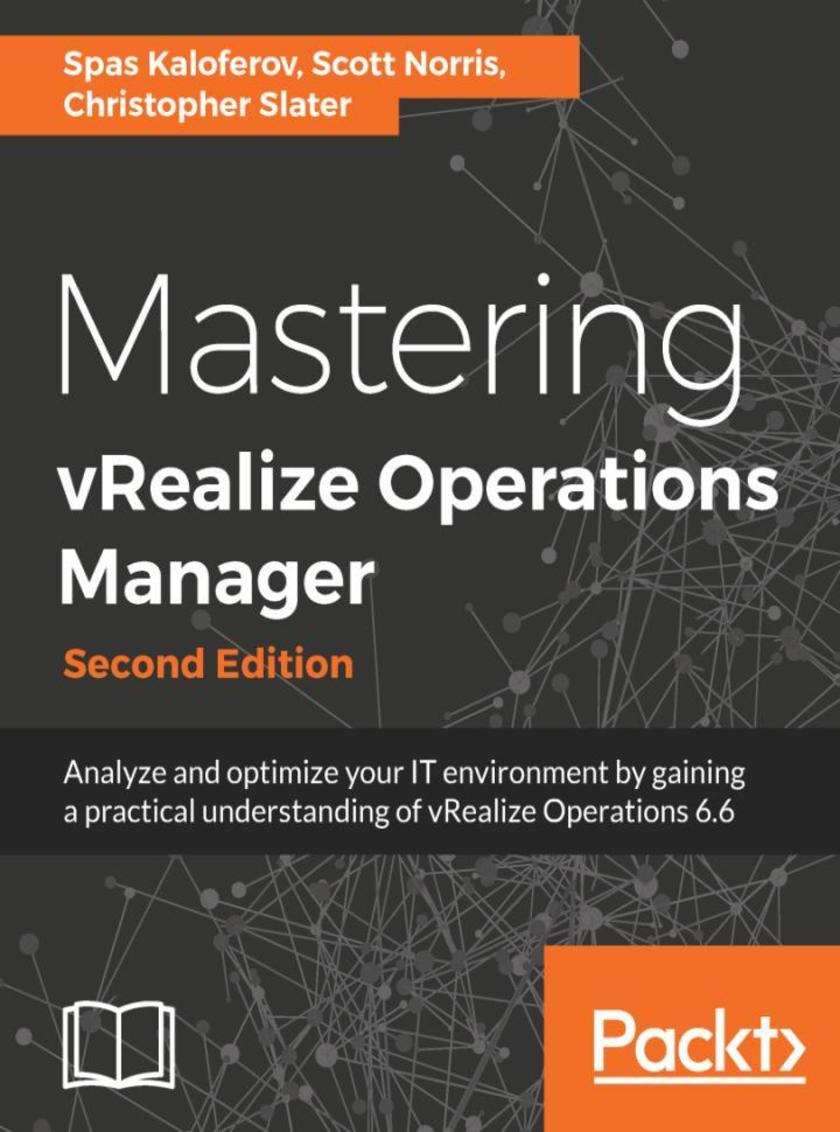
Mastering vRealize Operations Manager - Second Edition
¥81.74
Manage vRealize operations manager 6.6 effectively using this comprehensive guide. About This Book ? Get complete control of capacity management in your virtual environment ? Display the most appropriate performance metrics and assemble your own dashboard ? Analyze and process data from different sources into a single repository ? Optimize vRealize Automation workload placement Who This Book Is For If you are an administrator of a virtual environment and have used vRealize Operations before but want to gain a professional understanding by easily implementing complex tasks with it, then this book is for you. What You Will Learn ? Discover advanced vRealize Operations concepts and design your processes effectively for the underlying architecture ? Plan and install a new version or upgrade from a previous one ? Apply proven capacity management theories and techniques in practical, real-world environments ? Manipulate data and metrics to display them in the most effective way possible ? Create custom views and dashboards fit for any use case ? Explore how policies have evolved in vRealize Operations 6.6 and how to apply them in the most effective manner In Detail In the modern IT world, the criticality of managing the health, efficiency, and compliance of virtualized environments is more important than ever. With vRealize Operations Manager 6.6, you can make a difference to your business by being reactive rather than proactive. Mastering vRealize Operations Manager helps you streamline your processes and customize the environment to suit your needs. You will gain visibility across all devices in the network and retain full control. With easy-to-follow, step-by-step instructions and support images, you will quickly master the ability to manipulate your data and display it in a way that best suits you and your business or technical requirements. This book not only covers designing, installing, and upgrading vRealize Operations 6.6, but also gives you a deep understanding of its building blocks: badges, alerts, super metrics, views, dashboards, management packs, and plugins. With the new vRealize Operations 6.6 troubleshooting capabilities, capacity planning, intelligent workload placement, and additional monitoring capabilities, this book is aimed at ensuring you get the knowledge to manage your virtualized environment as effectively as possible. Style and approach A step-by-step practical approach guide that help you learn new features of vRealize operations manager 6.6.
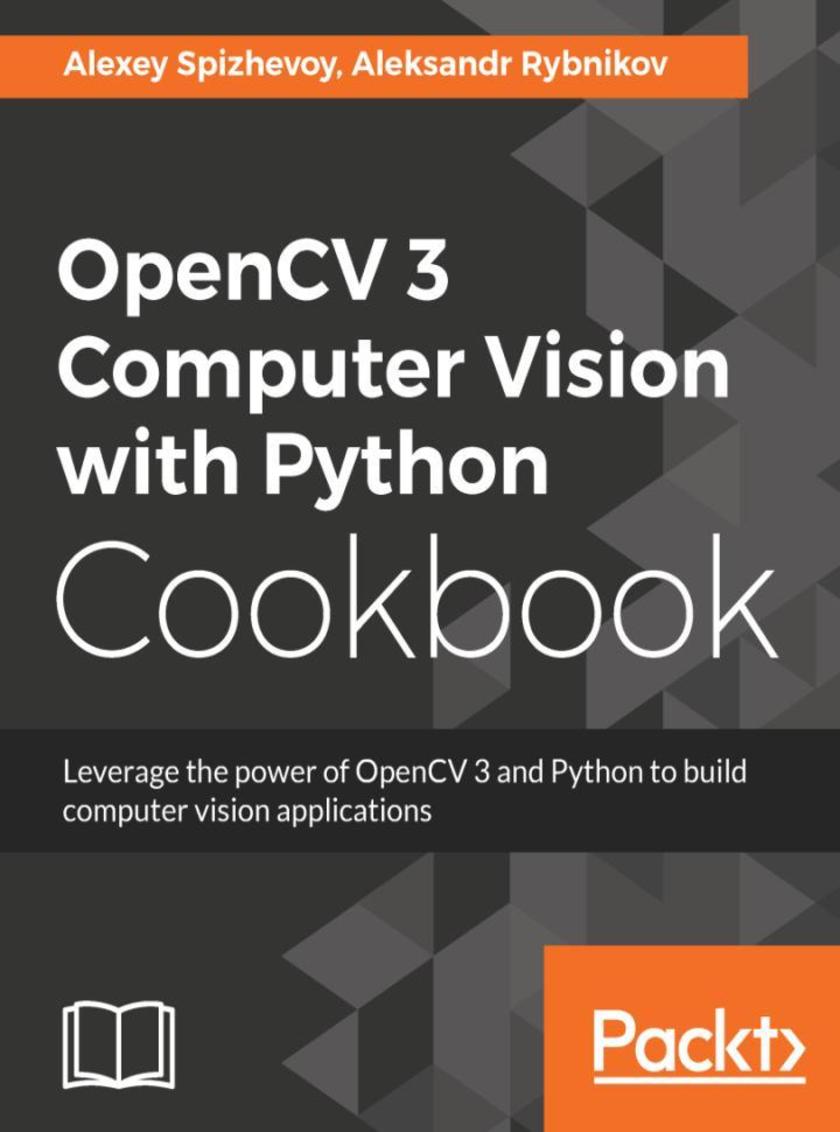
OpenCV 3 Computer Vision with Python Cookbook
¥81.74
Recipe-based approach to tackle the most common problems in Computer Vision by leveraging the functionality of OpenCV using Python APIs About This Book ? Build computer vision applications with OpenCV functionality via Python API ? Get to grips with image processing, multiple view geometry, and machine learning ? Learn to use deep learning models for image classification, object detection, and face recognition Who This Book Is For This book is for developers who have a basic knowledge of Python. If you are aware of the basics of OpenCV and are ready to build computer vision systems that are smarter, faster, more complex, and more practical than the competition, then this book is for you. What You Will Learn ? Get familiar with low-level image processing methods ? See the common linear algebra tools needed in computer vision ? Work with different camera models and epipolar geometry ? Find out how to detect interesting points in images and compare them ? Binarize images and mask out regions of interest ? Detect objects and track them in videos In Detail OpenCV 3 is a native cross-platform library for computer vision, machine learning, and image processing. OpenCV's convenient high-level APIs hide very powerful internals designed for computational efficiency that can take advantage of multicore and GPU processing. This book will help you tackle increasingly challenging computer vision problems by providing a number of recipes that you can use to improve your applications. In this book, you will learn how to process an image by manipulating pixels and analyze an image using histograms. Then, we'll show you how to apply image filters to enhance image content and exploit the image geometry in order to relay different views of a pictured scene. We’ll explore techniques to achieve camera calibration and perform a multiple-view analysis. Later, you’ll work on reconstructing a 3D scene from images, converting low-level pixel information to high-level concepts for applications such as object detection and recognition. You’ll also discover how to process video from files or cameras and how to detect and track moving objects. Finally, you'll get acquainted with recent approaches in deep learning and neural networks. By the end of the book, you’ll be able to apply your skills in OpenCV to create computer vision applications in various domains. Style and approach This book helps you learn the core concepts of OpenCV faster by taking a recipe-based approach where you can try out different code snippets to understand a concept.
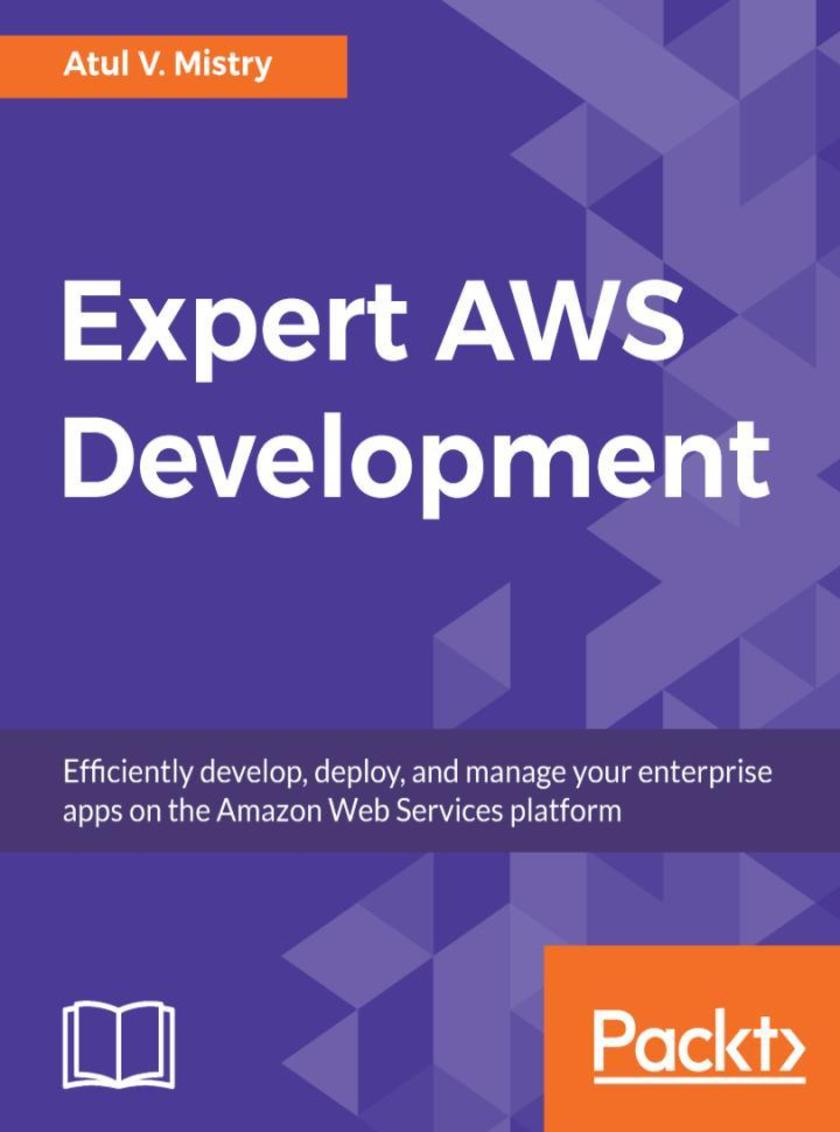
Expert AWS Development
¥81.74
Key concepts, sample applications, best practices, and troubleshooting tips to build highly scalable applications in AWS. About This Book ? Design highly available, cost efficient, fault tolerant, and scalable distributed systems ? A practical guide that will help you build, deploy, and manage applications with ease. ? Develop effective solutions with AWS SDK and Lambda Who This Book Is For This book targets developers who would like to build and manage web and mobile applications and services on the AWS platform. If you are an architect you will be able to take a deep dive and use examples that can be readily applied to real world scenarios. Some prior programming experience is assumed along with familiarity of cloud computing. What You Will Learn ? Learn how to get up and running with AWS Developer Tools. ? Integrate the four major phases in the Release Processes. Source, Build, Test and Production. ? Learn how to integrate Continuous Integration, Continuous Delivery, and Continuous Deployment in AWS. ? Make secure, scalable and fault tolerant applications. ? Understand different architectures and deploy complex architectures within minutes In Detail Continuous deployment and Agile methodology have enabled huge advances in modern applications. This book will enable the reader to make use of this rapidly evolving technology to build highly scalable applications within AWS using different architectures. You will begin with installation of AWS SDK and you will get hands-on experience on creating an application using AWS Management Console and AWS Command Line Interface (CLI). Next you will be integrating Applications with AWS services such as DynamoDB, Amazon Kinesis, AWS Lambda, Amazon SQS and Amazon SWF Following this you will get well versed with CI/CD workflow and work with four major phases in Release processes – Source, Build, Test and Production. Next you will learn to apply AWS developer tools in your Continuous Integration (CI) and Continuous Deployment (CD) WorkFlow. Later you will learn about User Authentication using Amazon Cognito and also how you can evaluate the best architecture as per your infrastructure costs. You will learn about Amazon EC2 service and deploy an app using Amazon EC2.You will also get well versed with container service which is Amazon EC2 Container Service (Amazon ECS) and you will learn to deploy an app using Amazon ECS. Along with EC2 and ECS, you will also deploying a practical real-world example of a CI/CD application with the Serverless Application Framework which is known as AWS Lambda. Finally you will learn how to build, develop and deploy the Application using AWS Developer tools like AWS CodeCommit, AWS CodeBuild, AWS CodeDeploy and AWS CodePipeline as per project needs. Also you can develop and deploy applications within minutes using AWS CodeStar from wizard. By the end of this book, the reader will effectively build, deploy, and manage applications on AWS along with scaling and securing applications with best practices and troubleshooting tips. Style and approach This book covers follows an approach where you will learn the key concepts followed by a real world example and some tips and tricks to make building and deploying easier
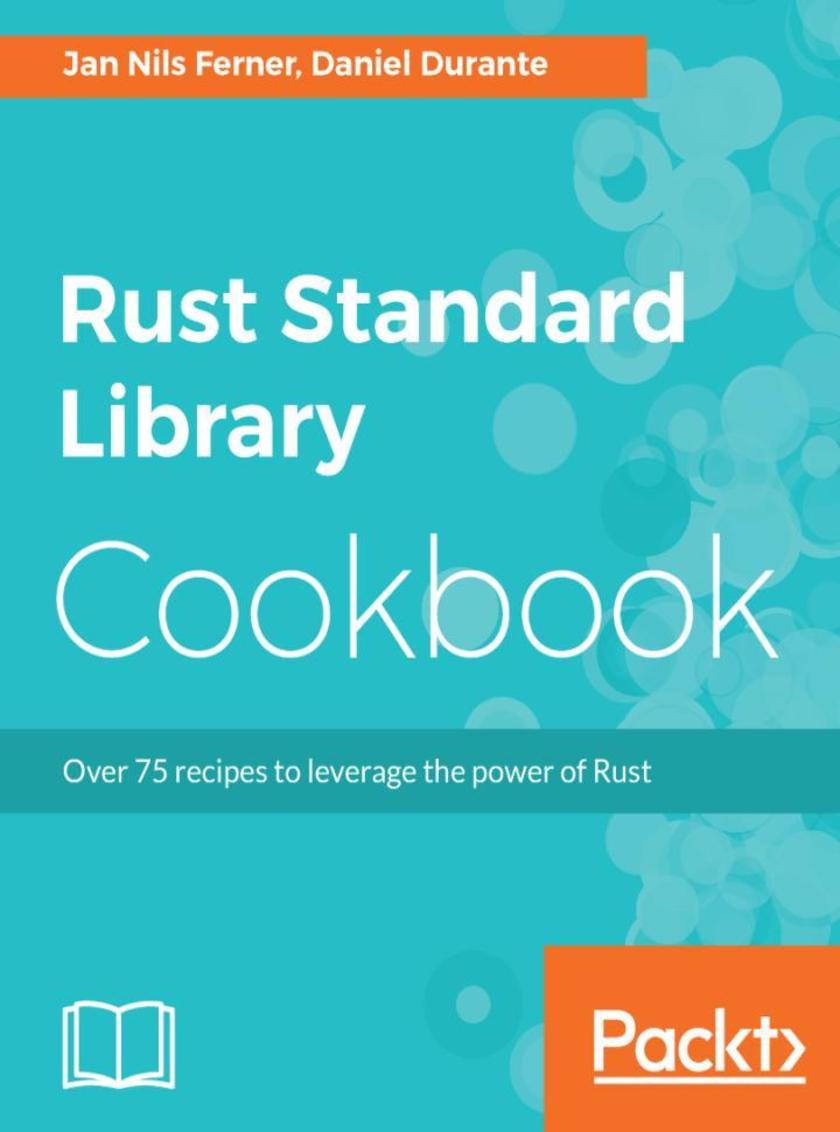
Rust Standard Library Cookbook
¥81.74
Explore the Rust Standard library and compose algorithms with minimal dependency on external libraries About This Book ? Develop high-quality, fast, and portable applications by leveraging the power of Rust's Standard library. ? Practical recipes that will help you work with the Standard library to boost your productivity as a Rust developer. ? Learn about most relevant external crates to be used along with the Standard library. Who This Book Is For This book is for developers who would like to explore the power of Rust and learn to use the STL for various functionalities. A basic Rust programming knowledge is assumed. What You Will Learn ? How to use the basic modules of the library: strings, command line access, and more. ? Implement collections and folding of collections using vectors, Deque, linked lists, and more. ? Handle various file types , compressing and decompressing data. ? Search for files with glob patterns. ? Implement parsing through various formats such as CSV, TOML, and JSON. ? Utilize drop trait , the Rust version of destructor. ? Resource locking with Bilocks. In Detail Mozilla’s Rust is gaining much attention with amazing features and a powerful library. This book will take you through varied recipes to teach you how to leverage the Standard library to implement efficient solutions. The book begins with a brief look at the basic modules of the Standard library and collections. From here, the recipes will cover packages that support file/directory handling and interaction through parsing. You will learn about packages related to advanced data structures, error handling, and networking. You will also learn to work with futures and experimental nightly features. The book also covers the most relevant external crates in Rust. By the end of the book, you will be proficient at using the Rust Standard library. Style and approach This recipe-based practical guide presents each topic with step-by-step instructions on how you can create fast and efficient applications utilizing Rust's Standard library packages.
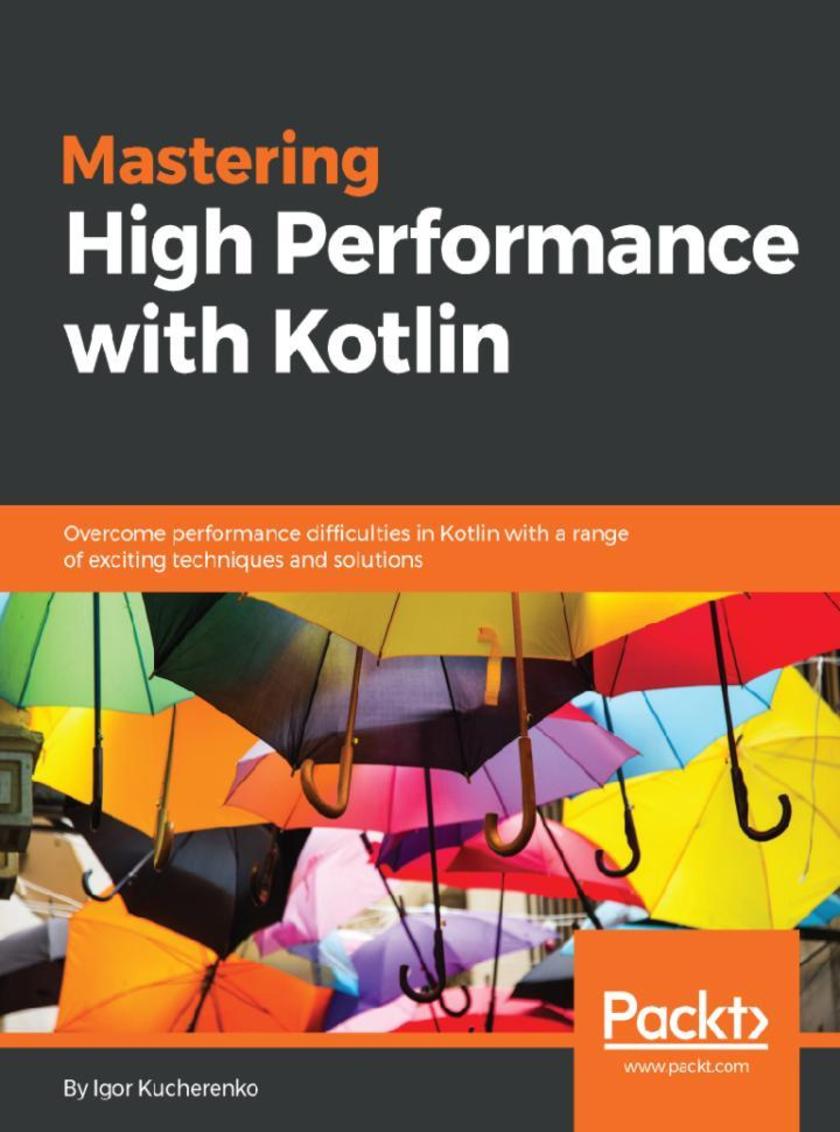
Mastering High Performance with Kotlin
¥81.74
Find out how to write Kotlin code without overhead and how to use different profiling tools and bytecode viewer to inspect expressions of Kotlin language. About This Book ? Apply modern Kotlin features to speed up processing and implement highly efficient and reliable codes. ? Learn memory optimization, concurrency, multi-threading, scaling, and caching techniques to achieve high performance. ? Learn how to prevent unnecessary overhead and use profiling tools to detect performance issues. Who This Book Is For This book is for Kotlin developers who would like to build reliable and high-performance applications. Prior Kotlin programming knowledge is assumed. What You Will Learn ? Understand the importance of high performance ? Learn performance metrics ? Learn popular design patterns currently being used in Kotlin ? Understand how to apply modern Kotlin features to data processing ? Learn how to use profling tools ? Discover how to read bytecode ? Learn to perform memory optimizations ? Uncover approaches to the multithreading environment In Detail The ease with which we write applications has been increasing, but with it comes the need to address their performance. A balancing act between easily implementing complex applications and keeping their performance optimal is a present-day requirement In this book, we explore how to achieve this crucial balance, while developing and deploying applications with Kotlin. The book starts by analyzing various Kotlin specifcations to identify those that have a potentially adverse effect on performance. Then, we move on to monitor techniques that enable us to identify performance bottlenecks and optimize performance metrics. Next, we look at techniques that help to us achieve high performance: memory optimization, concurrency, multi threading, scaling, and caching. We also look at fault tolerance solutions and the importance of logging. We'll also cover best practices of Kotlin programming that will help you to improve the quality of your code base. By the end of the book, you will have gained some insight into various techniques and solutions that will help to create high-performance applications in the Kotlin environment Style and approach This book guides you through how to use profiling tools to detect performance issues and build high-performance applications in the Kotlin environment.
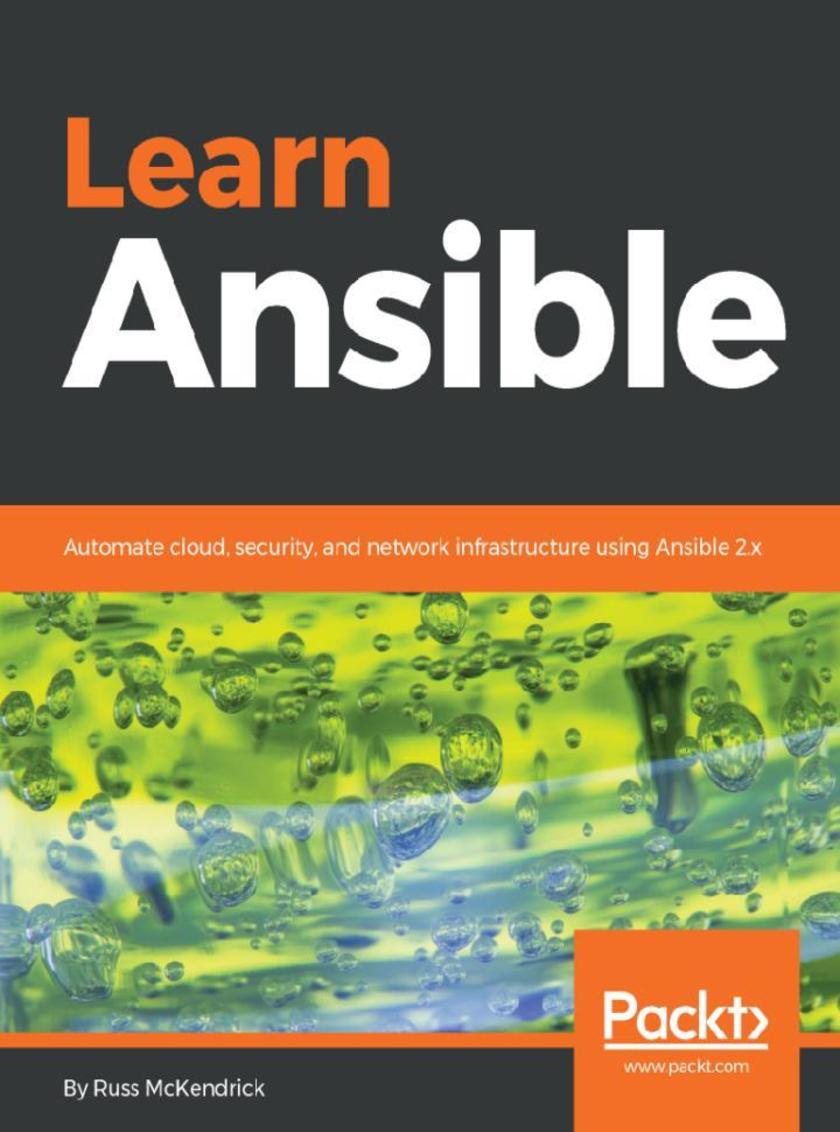
Learn Ansible
¥81.74
Run Ansible playbooks to launch complex multi-tier applications hosted in public clouds About This Book ? Build your learning curve using Ansible ? Automate cloud, network, and security infrastructures with ease ? Gain hands-on exposure on Ansible Who This Book Is For Learn Ansible is perfect for system administrators and developers who want to take their current workflows and transform them into repeatable playbooks using Ansible. No prior knowledge of Ansible is required. What You Will Learn ? Write your own playbooks to configure servers running CentOS, Ubuntu, and Windows ? Identify repeatable tasks and write playbooks to automate them ? Define a highly available public cloud infrastructure in code, making it easy to distribute your infrastructure configuration ? Deploy and configure Ansible Tower and Ansible AWX ? Learn to use community contributed roles ? Use Ansible in your day-to-day role and projects In Detail Ansible has grown from a small, open source orchestration tool to a full-blown orchestration and configuration management tool owned by Red Hat. Its powerful core modules cover a wide range of infrastructures, including on-premises systems and public clouds, operating systems, devices, and services—meaning it can be used to manage pretty much your entire end-to-end environment. Trends and surveys say that Ansible is the first choice of tool among system administrators as it is so easy to use. This end-to-end, practical guide will take you on a learning curve from beginner to pro. You'll start by installing and configuring the Ansible to perform various automation tasks. Then, we'll dive deep into the various facets of infrastructure, such as cloud, compute and network infrastructure along with security. By the end of this book, you'll have an end-to-end understanding of Ansible and how you can apply it to your own environments. Style and approach A hands-on approach to give you practical experience of writing playbooks and roles and executing them. At the end of each chapter, you’ll find test questions to test your knowledge on Ansible.
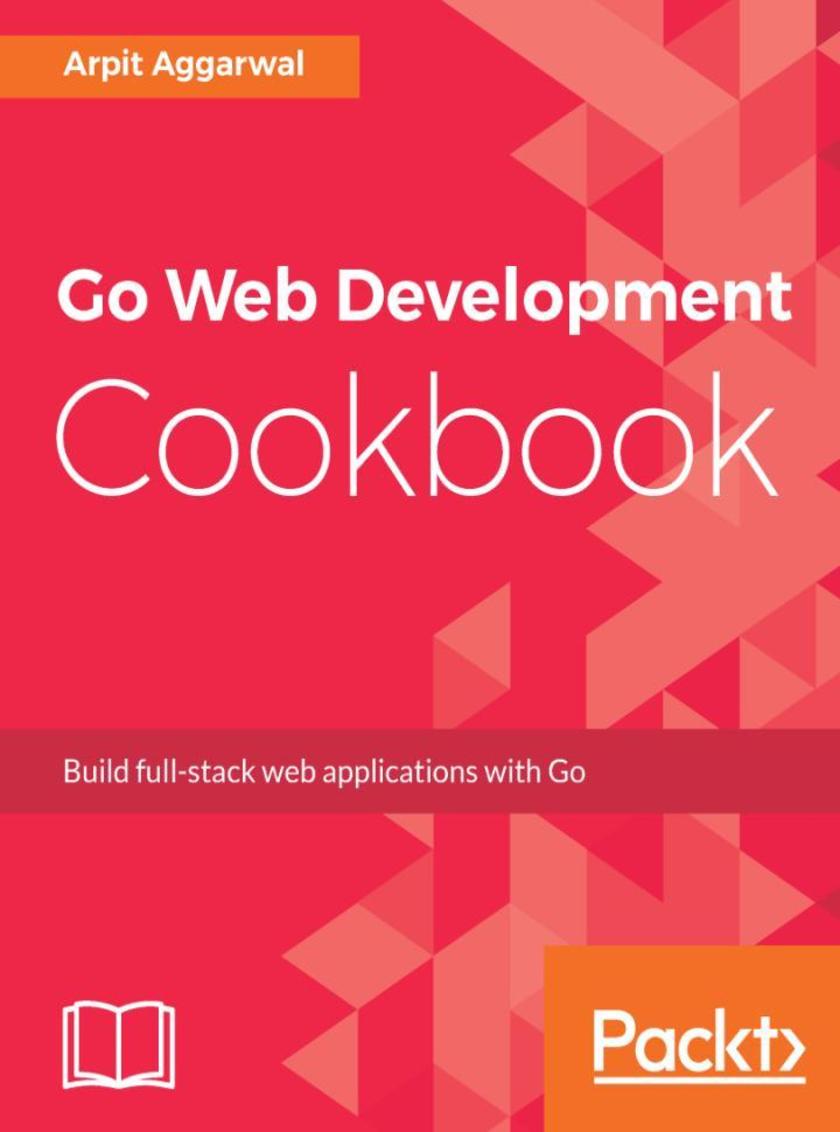
Go Web Development Cookbook
¥81.74
86 recipes on how to build fast, scalable, and powerful web services and applications with Go About This Book ? Become proficient in RESTful web services ? Build scalable, high-performant web applications in Go ? Get acquainted with Go frameworks for web development Who This Book Is For This book is for Go developers interested in learning how to use Go to build powerful web applications. A background in web development is expected. What You Will Learn ? Create a simple HTTP and TCP web server and understand how it works ? Explore record in a MySQL and MongoDB database ? Write and consume RESTful web service in Go ? Invent microservices in Go using Micro – a microservice toolkit ? Create and Deploy the Beego application with Nginx ? Deploy Go web application and Docker containers on an AWS EC2 instance In Detail Go is an open source programming language that is designed to scale and support concurrency at the language level. This gives you the liberty to write large concurrent web applications with ease. From creating web application to deploying them on Amazon Cloud Services, this book will be your one-stop guide to learn web development in Go. The Go Web Development Cookbook teaches you how to create REST services, write microservices, and deploy Go Docker containers. Whether you are new to programming or a professional developer, this book will help get you up to speed with web development in Go. We will focus on writing modular code in Go; in-depth informative examples build the base, one step at a time. You will learn how to create a server, work with static files, SQL, NoSQL databases, and Beego. You will also learn how to create and secure REST services, and create and deploy Go web application and Go Docker containers on Amazon Cloud Services. By the end of the book, you will be able to apply the skills you've gained in Go to create and explore web applications in any domain. Style and approach This book helps you learn core Go concepts faster by taking a recipe-based approach.
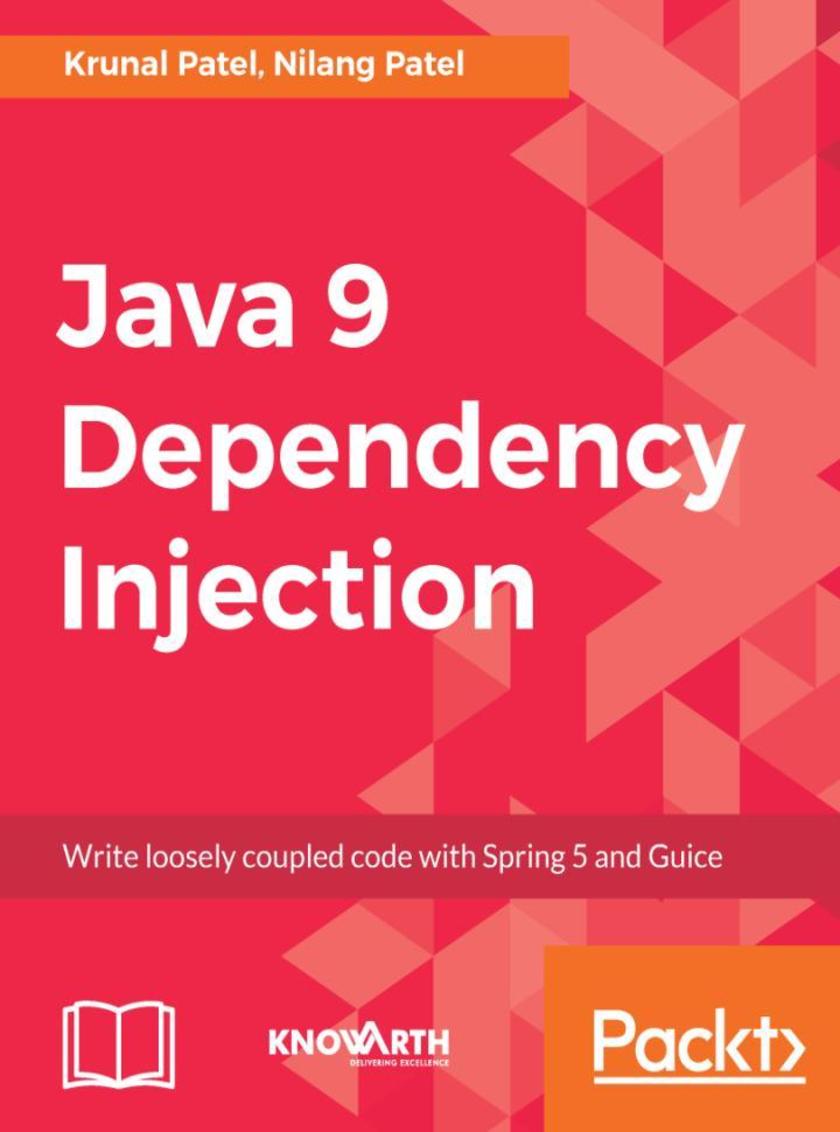
Java 9 Dependency Injection
¥81.74
Create clean code with Dependency Injection principles About This Book ? Use DI to make your code loosely coupled to manage and test your applications easily on Spring 5 and Google Guice ? Learn the best practices and methodologies to implement DI ? Write more maintainable Java code by decoupling your objects from their implementations Who This Book Is For This book is for Java developers who would like to implement DI in their application. Prior knowledge of the Spring and Guice frameworks and Java programming is assumed. What You Will Learn ? Understand the benefits of DI and fo from a tightly coupled design to a cleaner design organized around dependencies ? See Java 9’s new features and modular framework ? Set up Guice and Spring in an application so that it can be used for DI ? Write integration tests for DI applications ? Use scopes to handle complex application scenarios ? Integrate any third-party library in your DI-enabled application ? Implement Aspect-Oriented Programming to handle common cross-cutting concerns such as logging, authentication, and transactions ? Understand IoC patterns and anti-patterns in DI In Detail Dependency Injection (DI) is a design pattern that allows us to remove the hard-coded dependencies and make our application loosely coupled, extendable, and maintainable. We can implement DI to move the dependency resolution from compile-time to runtime. This book will be your one stop guide to write loosely coupled code using the latest features of Java 9 with frameworks such as Spring 5 and Google Guice. We begin by explaining what DI is and teaching you about IoC containers. Then you’ll learn about object compositions and their role in DI. You’ll find out how to build a modular application and learn how to use DI to focus your efforts on the business logic unique to your application and let the framework handle the infrastructure work to put it all together. Moving on, you’ll gain knowledge of Java 9’s new features and modular framework and how DI works in Java 9. Next, we’ll explore Spring and Guice, the popular frameworks for DI. You’ll see how to define injection keys and configure them at the framework-specific level. After that, you’ll find out about the different types of scopes available in both popular frameworks. You’ll see how to manage dependency of cross-cutting concerns while writing applications through aspect-oriented programming. Towards the end, you’ll learn to integrate any third-party library in your DI-enabled application and explore common pitfalls and recommendations to build a solid application with the help of best practices, patterns, and anti-patterns in DI. Style and approach This book will take an easy-to-understand, step-by-step approach providing hands-on examples at every stage.
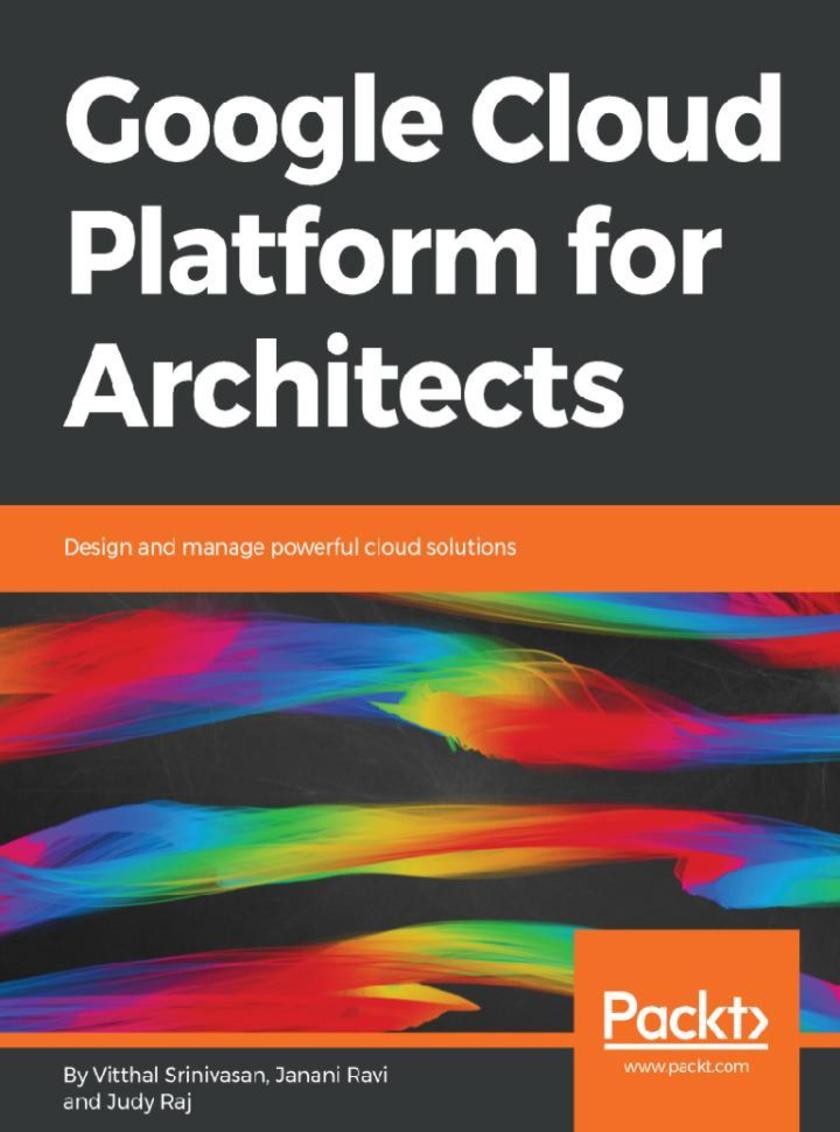
Google Cloud Platform for Architects
¥81.74
Get acquainted with GCP and manage robust, highly available, and dynamic solutions to drive business objective About This Book ? Identify the strengths, weaknesses and ideal use-cases for individual services offered on the Google Cloud Platform ? Make intelligent choices about which cloud technology works best for your use-case ? Leverage Google Cloud Platform to analyze and optimize technical and business processes Who This Book Is For If you are a Cloud architect who is responsible to design and manage robust cloud solutions with Google Cloud Platform, then this book is for you. System engineers and Enterprise architects will also find this book useful. A basic understanding of distributed applications would be helpful, although not strictly necessary. Some working experience on other public cloud platforms would help too. What You Will Learn ? Set up GCP account and utilize GCP services using the cloud shell, web console, and client APIs ? Harness the power of App Engine, Compute Engine, Containers on the Kubernetes Engine, and Cloud Functions ? Pick the right managed service for your data needs, choosing intelligently between Datastore, BigTable, and BigQuery ? Migrate existing Hadoop, Spark, and Pig workloads with minimal disruption to your existing data infrastructure, by using Dataproc intelligently ? Derive insights about the health, performance, and availability of cloud-powered applications with the help of monitoring, logging, and diagnostic tools in Stackdriver In Detail Using a public cloud platform was considered risky a decade ago, and unconventional even just a few years ago. Today, however, use of the public cloud is completely mainstream - the norm, rather than the exception. Several leading technology firms, including Google, have built sophisticated cloud platforms, and are locked in a fierce competition for market share. The main goal of this book is to enable you to get the best out of the GCP, and to use it with confidence and competence. You will learn why cloud architectures take the forms that they do, and this will help you become a skilled high-level cloud architect. You will also learn how individual cloud services are configured and used, so that you are never intimidated at having to build it yourself. You will also learn the right way and the right situation in which to use the important GCP services. By the end of this book, you will be able to make the most out of Google Cloud Platform design. Style and approach A clear, concise, and straightforward book which will enable to develop and manage optimum solutions for your infrastructure
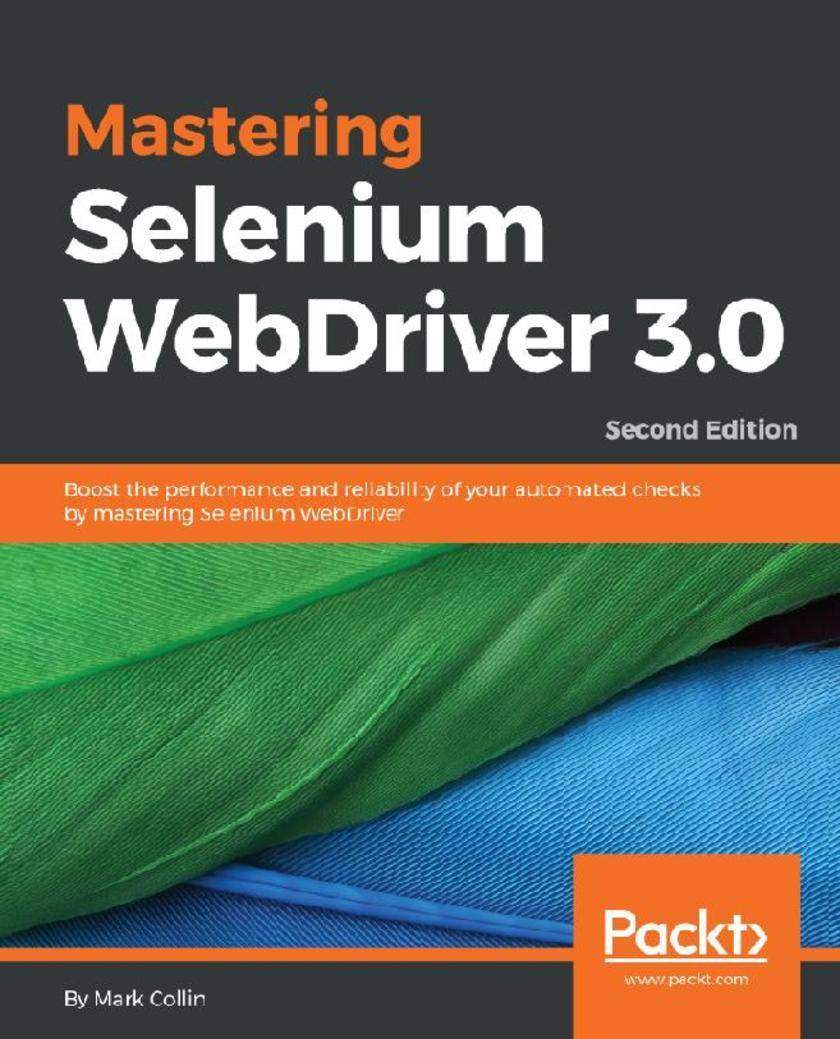
Mastering Selenium WebDriver 3.0
¥81.74
Complement Selenium with useful additions that fit seamlessly into the rich and well-crafted API that Selenium offers About This Book ? Understand the power, simplicity, and limitations of the core Selenium framework ? Write clear, readable, and reliable tests that perform complex test automation tasks ? Work with ChromeDriver and GeckoDriver in headless mode Who This Book Is For If you are a software tester or a developer with working experience in Selenium and competency with Java, who is interested in automation and are looking forward to taking the next step in their learning journey, then this is the book for you. What You Will Learn ? Provide fast, useful feedback with screenshots ? Create extensible, well-composed page objects ? Utilize ChromeDriver and GeckoDriver in headless mode ? Leverage the full power of Advanced User Interactions APIs ? Use JavascriptExecutor to execute JavaScript snippets in the browser through Selenium ? Build user interaction into your test script using JavascriptExecutor ? Learn the basics of working with Appium In Detail The second edition of Mastering Selenium 3.0 WebDriver starts by showing you how to build your own Selenium framework with Maven. You'll then look at how you can solve the difficult problems that you will undoubtedly come across as you start using Selenium in an enterprise environment and learn how to produce the right feedback when failing. Next, you’ll explore common exceptions that you will come across as you use Selenium, the root causes of these exceptions, and how to fix them. Along the way, you’ll use Advanced User Interactions APIs, running any JavaScript you need through Selenium; and learn how to quickly spin up a Selenium Grid using Docker containers. In the concluding chapters, you‘ll work through a series of scenarios that demonstrate how to extend Selenium to work with external libraries and applications so that you can be sure you are using the right tool for the job. Style and approach This book is a pragmatic guide that takes you through the process of creating a test framework with Selenium 3. It then shows you how you can extend this framework to overcome common obstacles that you will come across whilst using Selenium.
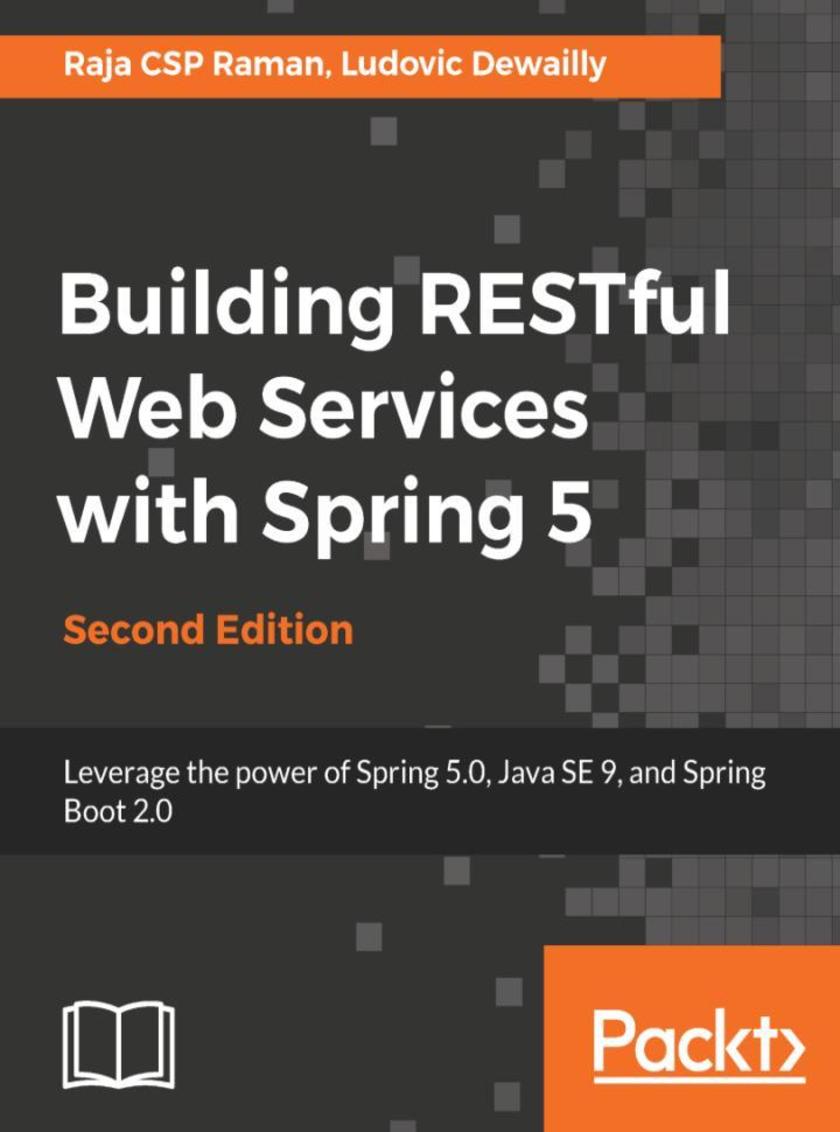
Building RESTful Web Services with Spring 5 - Second Edition
¥81.74
Find out how to implement the REST architecture to build resilient software in Java with the help of the Spring 5.0 framework. About This Book ? Follow best practices and explore techniques such as clustering and caching to achieve a reactive, scalable web service, ? Leverage the Spring Framework to quickly implement RESTful endpoints, ? Learn to implement a client library for a RESTful web service using the Spring Framework along with the new front end framework. Who This Book Is For This book is intended for those who want to learn to build RESTful web services with the latest Spring 5.0 Framework. To make best use of the code samples included in the book, you should have a basic knowledge of the Java language. Previous experience with the Spring Framework would also help you get up and running quickly. What You Will Learn ? Deep dive into the principles behind REST ? Expose CRUD operations through RESTful endpoints with the Spring Framework ? Devise response formats and error handling strategies, offering a consistent and flexible structure to simplify integration for service consumers ? Follow the best approaches for dealing with a service's evolution while maintaining backward compatibility ? Understand techniques to secure web services ? Comply with the best ways to test RESTful web services, including tips for load testing ? Optimise and scale web services using techniques such as caching and clustering In Detail REST is an architectural style that tackles the challenges of building scalable web services. In today's connected world, APIs have taken a central role on the web. APIs provide the fabric through which systems interact, and REST has become synonymous with APIs.The depth, breadth, and ease of use of Spring makes it one of the most attractive frameworks in the Java ecosystem. Marrying the two technologies is therefore a very natural choice.This book takes you through the design of RESTful web services and leverages the Spring Framework to implement these services. Starting from the basics of the philosophy behind REST, you'll go through the steps of designing and implementing an enterprise-grade RESTful web service. Taking a practical approach, each chapter provides code samples that you can apply to your own circumstances.This second edition brings forth the power of the latest Spring 5.0 release, working with MVC built-in as well as the front end framework. It then goes beyond the use of Spring to explores approaches to tackle resilience, security, and scalability concerns. Improve performance of your applications with the new HTTP 2.0 standards. You'll learn techniques to deal with security in Spring and discover how to implement unit and integration test strategies.Finally, the book ends by walking you through building a Java client for your RESTful web service, along with some scaling techniques using the new Spring Reactive libraries. Style and approach Readers will be taken through a set of specific patterns and tested practices to build effective RESTful systems in Java using the Spring framework.
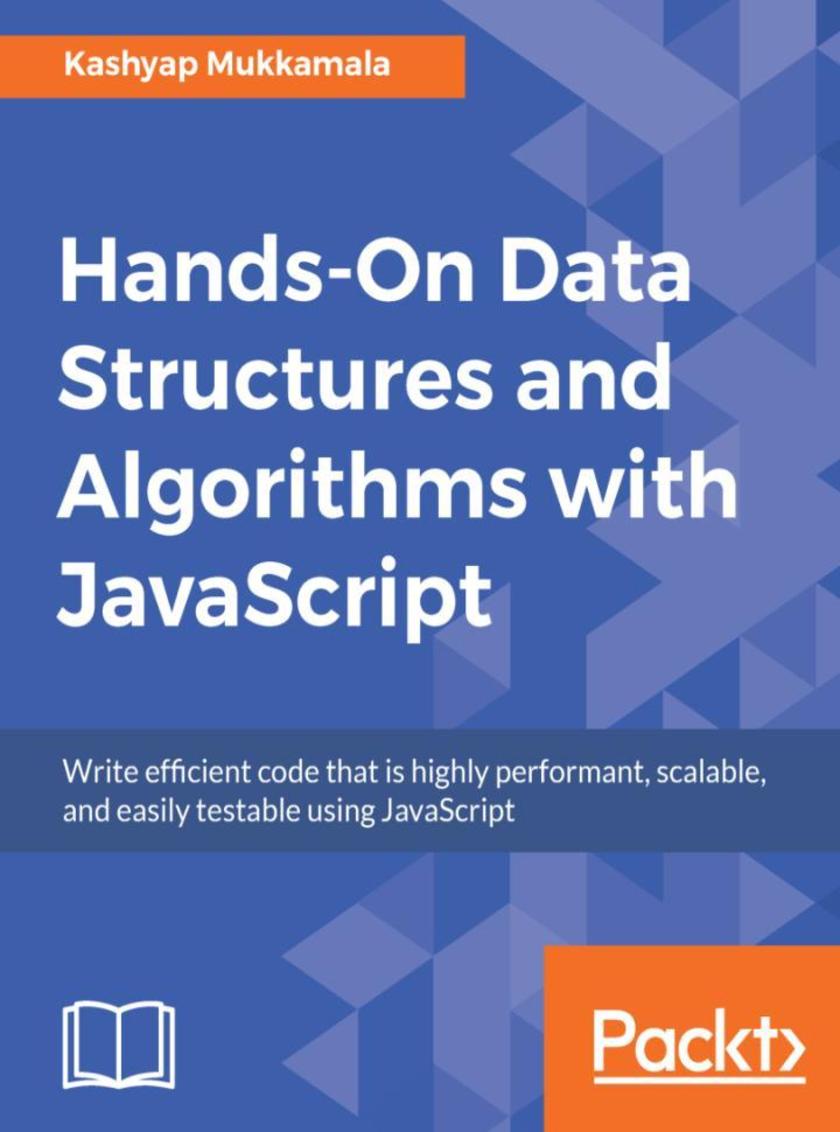
Hands-On Data Structures and Algorithms with JavaScript
¥81.74
Increase your productivity by implementing complex data structures and algorithms using JavaScript About This Book ? A step by step guide, which will provide you with a thorough discussion on the analysis and design of fundamental JavaScript data structures ? Get a better understanding of advanced concepts such as space and time complexity to optimize your code ? Focus more on solving the business problem and less on the technical challenges involved Who This Book Is For If you are a JavaScript developer looking for practical examples to implement data structures and algorithms in your web applications, then this book is for you. Familiarity with data structures and algorithms will be helpful to get the most out of this book. What You Will Learn ? Build custom Back buttons embedded within your application ? Build part of a basic JavaScript syntax parser and evaluator for an online IDE ? Build a custom activity user tracker for your application ? Generate accurate recommendations for credit card approval using Decision Trees ? Simplify complex problems using a graphs ? Increase the performance of an application using micro-optimizations In Detail Data structures and algorithms are the fundamental building blocks of computer programming. They are critical to any problem, provide a complete solution, and act like reusable code. Using appropriate data structures and having a good understanding of algorithm analysis are key in JavaScript to solving crises and ensuring your application is less prone to errors. Do you want to build applications that are high-performing and fast? Are you looking for complete solutions to implement complex data structures and algorithms in a practical way? If either of these questions rings a bell, then this book is for you! You'll start by building stacks and understanding performance and memory implications. You will learn how to pick the right type of queue for the application. You will then use sets, maps, trees, and graphs to simplify complex applications. You will learn to implement different types of sorting algorithm before gradually calculating and analyzing space and time complexity. Finally, you'll increase the performance of your application using micro optimizations and memory management. By the end of the book you will have gained the skills and expertise necessary to create and employ various data structures in a way that is demanded by your project or use case. Style and approach Step-by-step topics will help you get started with solutions for implementing classic data structures and algorithms. Learn by doing with hands-on code snippets that give you practical experience of the subject.
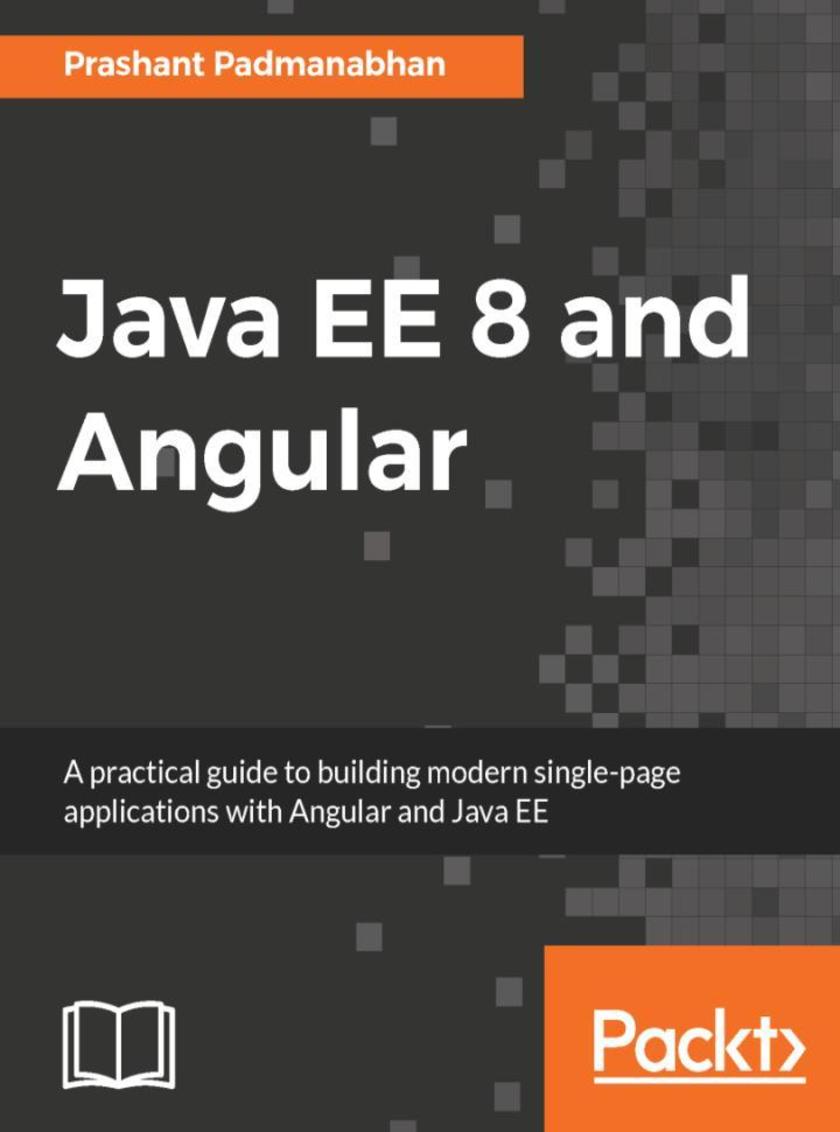
Java EE 8 and Angular
¥81.74
Learn how to build high-performing enterprise applications using Java EE powered by Angular at the frontend About This Book ? Leverage Java EE 8 features to build robust back end for your enterprise applications ? Use Angular to build a single page frontend and combine it with the Java EE backend ? Practical guide filled with ample real-world examples Who This Book Is For This book is for Java EE developers who would like to build modern enterprise web applications using Angular. No prior knowledge of Angular is expected. What You Will Learn ? Write CDI-based code in Java EE 8 applications ? Build an understanding of Microservices and what they mean in Java EE context ? Use Docker to build and run a microservice application ? Use configuration options to work effectively with JSON documents ? Understand asynchronous task handling and writing REST API clients ? Explore the fundamentals of TypeScript, which sets the foundation for working on Angular projects ? Use Angular CLI to add and manage new features ? Use JSON Web tokens to secure Angular applications against malicious attacks In Detail The demand for modern and high performing web enterprise applications is growing rapidly. No more is a basic HTML front-end enough to meet customer demands. This book will be your one stop guide to build outstanding enterprise web applications with Java EE and Angular. It will teach you how to harness the power of Java EE to build sturdy back ends while applying Angular on the front end. Your journey to building excellent web enterprise applications starts here! The book starts with a brief introduction to the fundamentals of Java EE and all the new APIs offered in the latest release. Armed with the knowledge of Java EE 8, you will go over what it’s like to build an end to end application, configure database connection for JPA, and build scalable microservice using RESTful APIs running in docker containers. Taking advantage of Payara Micro capabilities, you will build an Issue Management System, which will have various features exposed as services using Java EE backend. With a detailed coverage of Angular fundamentals, the book will expand the Issue Management System by building a modern single page application frontend. Moving forward you will learn to fit both the pieces together i.e. the frontend Angular application with the backend java EE microservices. As each unit in a microservice promotes high cohesion, you will learn different ways in which independent units can be tested efficiently. Finishing off with concepts on securing your enterprise applications, this book is a hands on guide to building Modern Web Applications. Style and approach This is a step-by-step tutorial that explains to building modern web enterprise applications.

Practical Mobile Forensics - Third Edition
¥81.74
Investigate, analyze, and report iOS, Android, and Windows devices About This Book ? Get hands-on experience in performing simple to complex mobile forensics techniques. ? Retrieve and analyze data stored not only on mobile devices but also through the cloud and other connected mediums. ? A practical guide to leveraging the power of mobile forensics on popular mobile platforms with lots of tips, tricks, and caveats. Who This Book Is For If you are a forensics professional and are eager to widen your forensics skill set to mobile forensics then, this book is for you. Some understanding of digital forensics practices would do wonders. What You Will Learn ? Discover the new techniques in practical mobile forensics ? Understand the architecture and security mechanisms present in iOS and Android platforms ? Identify sensitive files on the iOS and Android platforms ? Set up a forensic environment ? Extract data from the iOS and Android platforms ? Recover data on the iOS and Android platforms ? Understand the forensics of Windows devices ? Explore various third-party application techniques and data recovery techniques In Detail Covering up-to-date mobile platforms, this book will focuses on teaching you the most recent techniques for investigating mobile devices. We delve mobile forensics techniques in iOS 9-11, Android 7-8 devices, and Windows 10. We will demonstrate the latest open source and commercial mobile forensics tools, enabling you to analyze and retrieve data effectively. You will learn how to introspect and retrieve data from the cloud, and document and prepare reports of your investigations. By the end of this book, you will have mastered the current operating systems and the relevant techniques to recover data from mobile devices by leveraging open source solutions. Style and approach This book takes a very practical approach and depicts real-life mobile forensics scenarios with lots of tips and tricks to help you acquire the required forensics skillset for various mobile platforms.
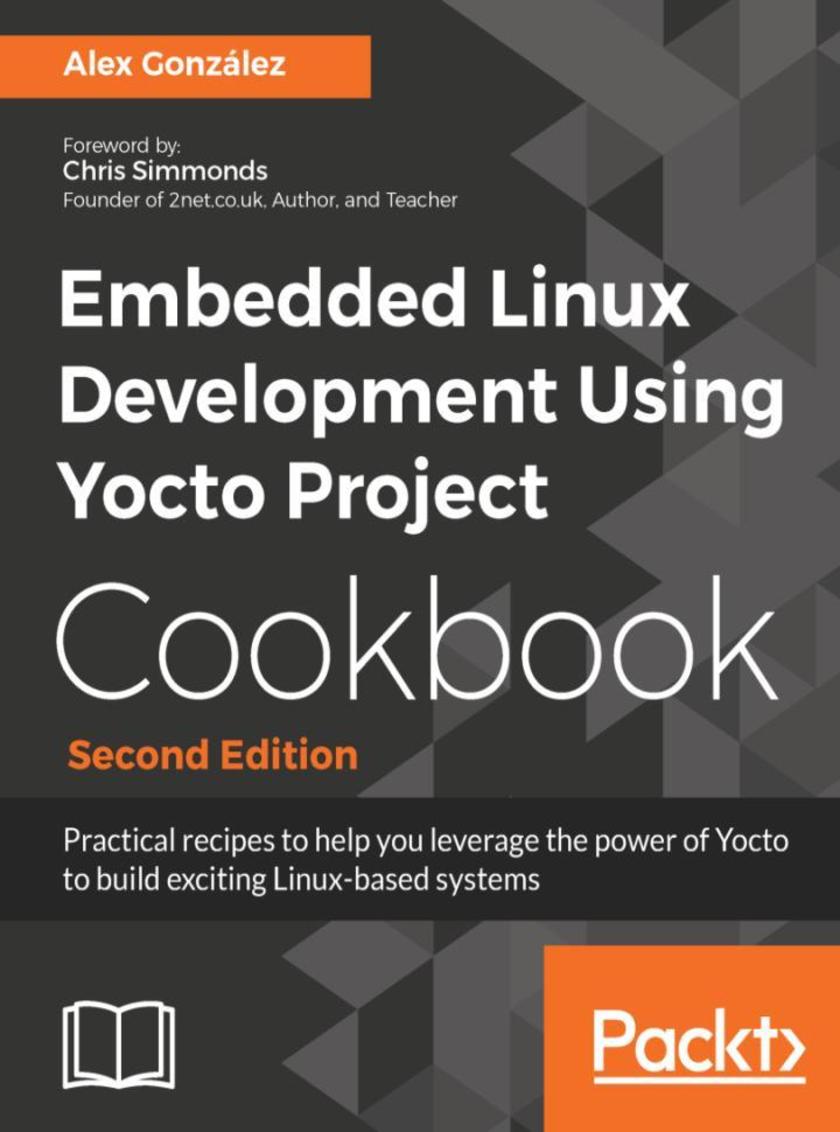
Embedded Linux Development Using Yocto Project Cookbook - Second Edition
¥81.74
Over 79 hands-on recipes for professional embedded Linux developers to optimize and boost their Yocto Project know-how About This Book ? Optimize your Yocto setup to speed up development and debug build issues ? Use what is quickly becoming the standard embedded Linux product builder framework—the Yocto Project ? Recipe-based implementation of best practices to optimize your Linux system Who This Book Is For If you are an embedded Linux developer with the basic knowledge of Yocto Project, this book is an ideal way to broaden your knowledge with recipes for embedded development. What You Will Learn ? Optimize your Yocto Project setup to speed up development and debug build issues ? Use Docker containers to build Yocto Project-based systems ? Take advantage of the user-friendly Toaster web interface to the Yocto Project build system ? Build and debug the Linux kernel and its device trees ? Customize your root filesystem with already-supported and new Yocto packages ? Optimize your production systems by reducing the size of both the Linux kernel and root filesystems ? Explore the mechanisms to increase the root filesystem security ? Understand the open source licensing requirements and how to comply with them when cohabiting with proprietary programs ? Create recipes, and build and run applications in C, C++, Python, Node.js, and Java In Detail The Yocto Project has become the de facto distribution build framework for reliable and robust embedded systems with a reduced time to market. You'll get started by working on a build system where you set up Yocto, create a build directory, and learn how to debug it. Then, you'll explore everything about the BSP layer, from creating a custom layer to debugging device tree issues. In addition to this, you’ll learn how to add a new software layer, packages, data, *s, and configuration files to your system. You will then cover topics based on application development, such as using the Software Development Kit and how to use the Yocto project in various development environments. Toward the end, you will learn how to debug, trace, and profile a running system. This second edition has been updated to include new content based on the latest Yocto release. Style and approach This recipe-based book will guide you through all the development stages of an embedded Linux product design using the Yocto Project.
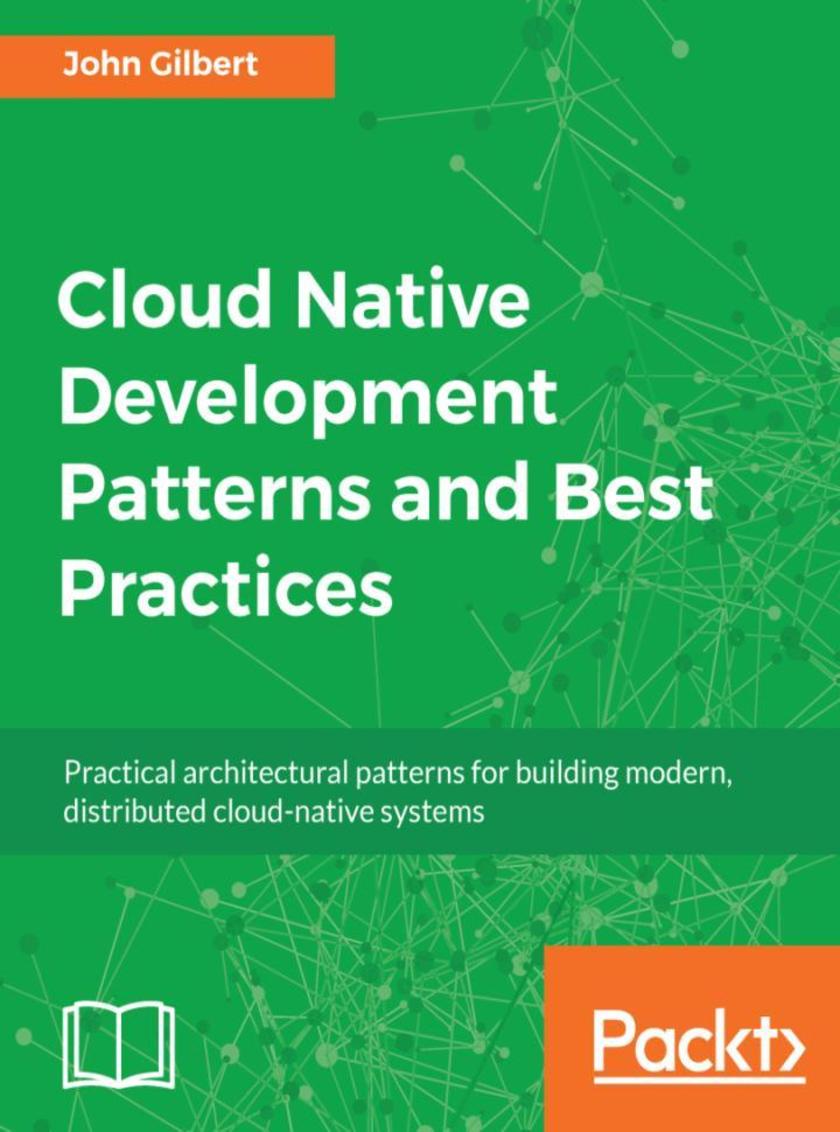
Cloud Native Development Patterns and Best Practices
¥81.74
Learn to apply cloud-native patterns and practices to deliver responsive, resilient, elastic, and message-driven systems with confidence About This Book ? Understand the architectural patterns involved in cloud-native architectures ? Minimize risk by evolving your monolithic applications into distributed cloud-native systems ? Discover best practices for applying cloud-native patterns to your enterprise-level cloud applications Who This Book Is For This book is for developers who would like to progress into building cloud-native systems and are keen to learn the patterns involved. Basic knowledge of programming and cloud computing is required. What You Will Learn ? Enable massive scaling by turning your database inside out ? Unleash flexibility via event streaming ? Leverage polyglot persistence and cloud-native databases ? Embrace modern continuous delivery and testing techniques ? Minimize risk by evolving your monoliths to cloud-native ? Apply cloud-native patterns and solve major architectural problems in cloud environment In Detail Build systems that leverage the benefits of the cloud and applications faster than ever before with cloud-native development. This book focuses on architectural patterns for building highly scalable cloud-native systems. You will learn how the combination of cloud, reactive principles, devops, and automation enable teams to continuously deliver innovation with confidence. Begin by learning the core concepts that make these systems unique. You will explore foundational patterns that turn your database inside out to achieve massive scalability with cloud-native databases. You will also learn how to continuously deliver production code with confidence by shifting deployment and testing all the way to the left and implementing continuous observability in production. There's more—you will also learn how to strangle your monolith and design an evolving cloud-native system. By the end of the book, you will have the ability to create modern cloud-native systems. Style and approach This book follows a pragmatic approach to understand cloud-native design patterns and explains the functioning and design considerations to build modern cloud-native systems in depth.
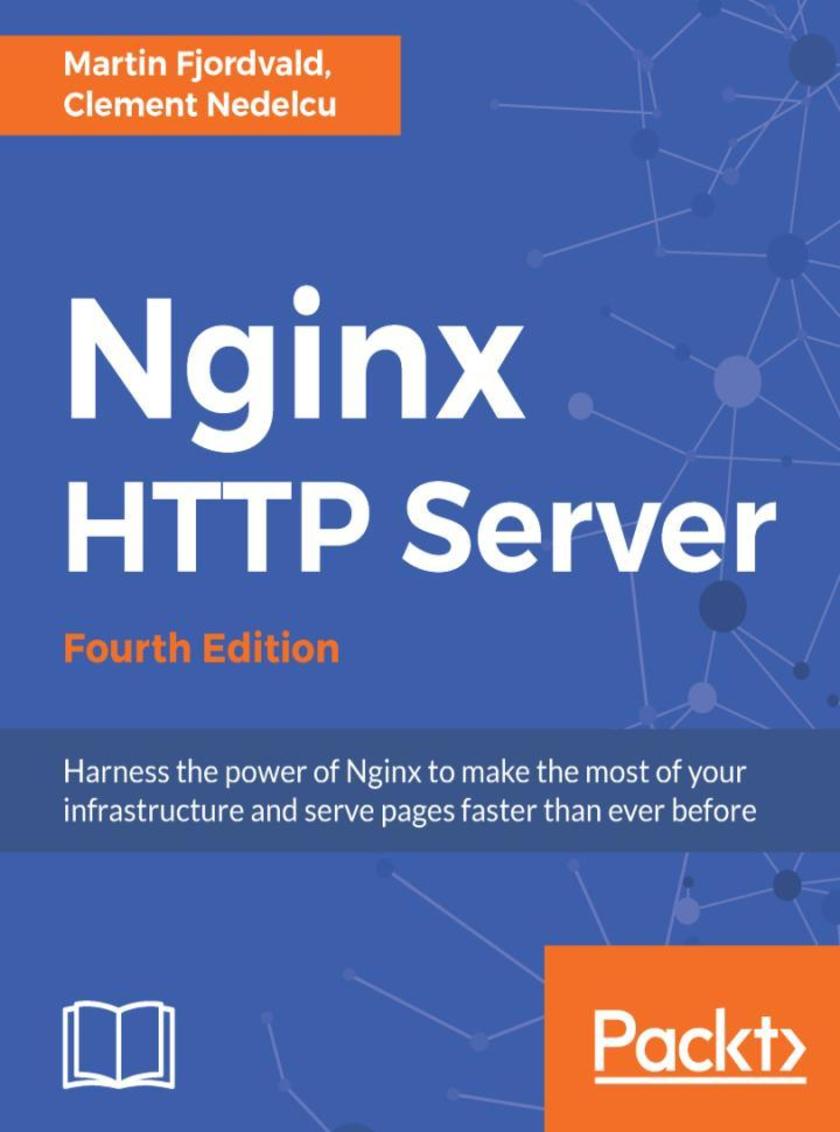
Nginx HTTP Server - Fourth Edition
¥81.74
Make the most of your infrastructure and serve pages faster than ever with Nginx. About This Book ? Discover possible interactions between Nginx and Apache to get the best of both worlds ? Learn to exploit the features offered by Nginx for your web applications ? Get your hands on the most updated version of Nginx (1.13.2) to support all your web administration requirements Who This Book Is For This book is a perfect match to web administrators who are interested in solutions to optimize their infrastructure. Whether you are looking into replacing your existing web server software or integrating a new tool to cooperate with applications that are already up and running, this book is your ideal resource. What You Will Learn ? Download and install Nginx on your system ? Prepare a basic configuration and test your initial setup ? Discover the core functionality of the HTTP module ? Make the most of first- and third-party Nginx modules ? Set up Nginx to work with PHP, Python, and other applications ? Learn how to set up Nginx to work with Apache ? Fully replace Apache with Nginx ? Optimize your architecture with threads or load balancing ? Identify errors in configuration and learn basic troubleshooting techniques ? Consult the exhaustive directive and module index for reference In Detail Nginx is a lightweight HTTP server designed for high-traffic websites, with network scalability as the primary objective. With the advent of high-speed internet access, short loading times and fast transfer rates have become a necessity. This book is a detailed guide to setting up Nginx in ways that correspond to actual production situations: as a standalone server, as a reverse proxy, interacting with applications via FastCGI, and more. In addition, this complete direct reference will be indispensable at all stages of the configuration and maintenance processes. This book mainly targets the most recent version of Nginx (1.13.2) and focuses on all the new additions and improvements, such as support for HTTP/2, improved dynamic modules, security enhancements, and support for multiple SSL certificates. This book is the perfect companion for both Nginx beginners and experienced administrators. For beginners, it will take you through the complete process of setting up this lightweight HTTP server on your system and configuring its various modules so that it does exactly what you need quickly and securely. For more experienced administrators, this book provides different approaches that can help you make the most of your current infrastructure. Nginx can be employed in many situations, whether you are looking to construct an entirely new web-serving architecture or simply want to integrate an efficient tool to optimize your site loading speeds. Style and approach This book aims to serve as a handy reference of all Nginx first-party modules and directives, allowing the reader to develop their own web configuration more efficiently.
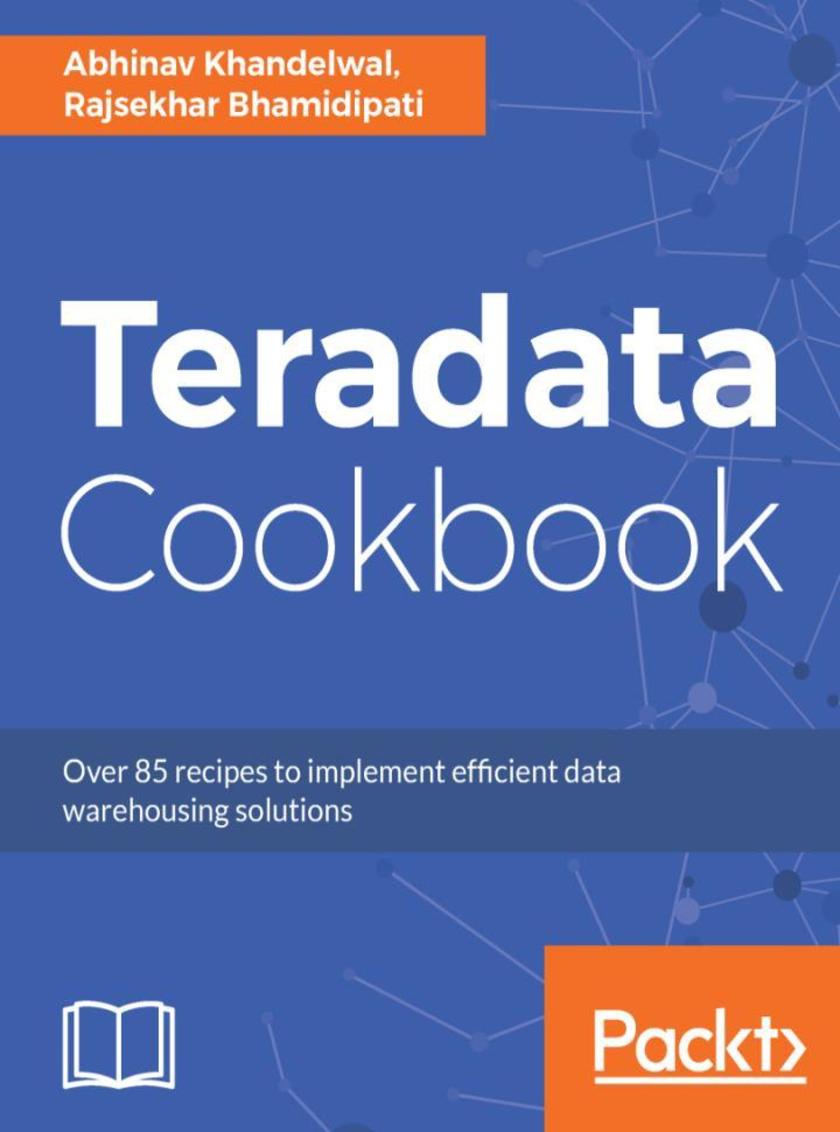
Teradata Cookbook
¥81.74
Data management and analytics simplified with Teradata About This Book ? Take your understanding of Teradata to the next level and build efficient data warehousing applications for your organization ? Covers recipes on data handling, warehousing, advanced querying and the administrative tasks in Teradata. ? Contains practical solutions to tackle common (and not-so-common) problems you might encounter in your day to day activities Who This Book Is For This book is for Database administrator's and Teradata users who are looking for a practical, one-stop resource to solve all their problems while handling their Teradata solution. If you are looking to learn the basic as well as the advanced tasks involved in Teradata querying or administration, this book will be handy. Some knowledge of relational database concepts will be helpful to get the best out of this book. What You Will Learn ? Understand Teradata's competitive advantage over other RDBMSs. ? Use SQL to process data stored in Teradata tables. ? Leverage Teradata’s available application utilities and parallelism to play with large datasets ? Apply various performance tuning techniques to optimize the queries. ? Acquire deeper knowledge and understanding of the Teradata Architecture. ? Easy steps to load, archive, restore data and implement Teradata protection features ? Gain confidence in running a wide variety of Data analytics and develop applications for the Teradata environment In Detail Teradata is an enterprise software company that develops and sells its eponymous relational database management system (RDBMS), which is considered to be a leading data warehousing solutions and provides data management solutions for analytics. This book will help you get all the practical information you need for the creation and implementation of your data warehousing solution using Teradata. The book begins with recipes on quickly setting up a development environment so you can work with different types of data structuring and manipulation function. You will tackle all problems related to efficient querying, stored procedure searching, and navigation techniques. Additionally, you’ll master various administrative tasks such as user and security management, workload management, high availability, performance tuning, and monitoring. This book is designed to take you through the best practices of performing the real daily tasks of a Teradata DBA, and will help you tackle any problem you might encounter in the process. Style and approach This book is a rich collection of recipes that will come in handy when you are working with Teradata. It addresses your common and not-so-common pain points,and this is a book that you must have on the shelf.
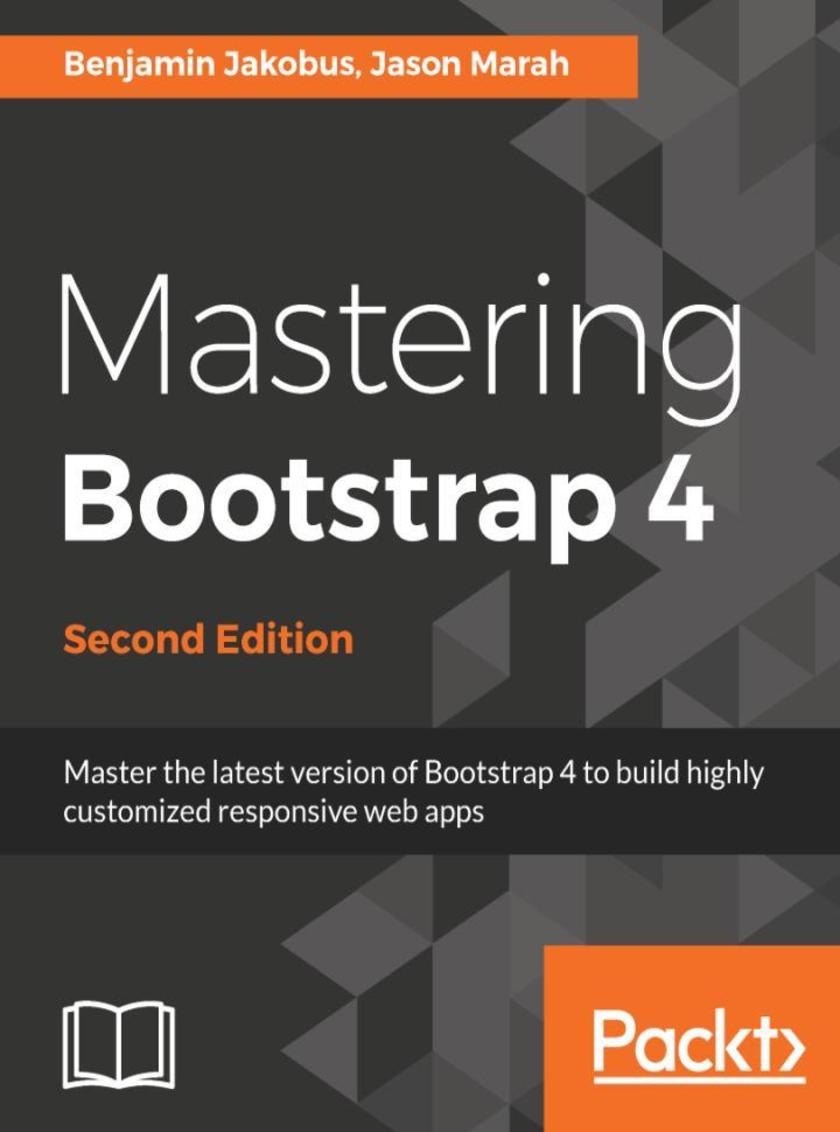
Mastering Bootstrap 4 - Second Edition
¥81.74
Build responsive, dynamic, and mobile-first applications on the web with Bootstrap 4 About This Book ? Master the art of creating highly intuitive and responsive web interfaces with Bootstrap 4 ? Combine the power of Bootstrap and popular front-end JavaScript frameworks such as Angular and React to build cutting-edge web apps ? Infuse your web pages with life and movement using Bootstrap jQuery plugins Who This Book Is For This book targets readers who wish to leverage Bootstrap 4 to create responsive web applications. Basic knowledge of web development concepts and web technologies such as HTML, CSS, and JavaScript is required. What You Will Learn ? Create a professional Bootstrap-based website from scratch without using third-party templates ? Leverage Bootstrap's powerful grid system ? Style various types of content and learn how to build a page's layout from scratch by applying the power of Bootstrap 4 ? Take advantage of Bootstrap's form helper and contextual classes ? Improve your website's overall user experience with headers and footers ? Infuse your web pages using Bootstrap jQuery plugins and create your own Bootstrap plugins ? Learn what utility classes Bootstrap 4 has to offer, how they are implemented, and the best way to use them. ? Create more advanced web interfaces by leveraging the power of accordions, dropdowns, and list groups. ? Incorporate Bootstrap into an AngularJS or React application and use Bootstrap components as AngularJS directives In Detail Bootstrap 4 is a free CSS and JavaScript framework that allows developers to rapidly build responsive web interfaces. This book will help you use and adapt Bootstrap to produce enticing websites that fit your needs. You will build a customized Bootstrap website from scratch, using various approaches to customize the framework with increasing levels of skill. You will get to grips with Bootstrap's key features and quickly discover various ways in which Bootstrap can help you develop web interfaces. Then take a walk through the fundamental features, such as its grid system, global styles, helper classes, and responsive utilities. When you have mastered these, you will discover how to structure page layouts, utilize Bootstrap's various navigation components, use forms, and style different types of content. Among other things, you will also tour the anatomy of a Bootstrap plugin, create your own custom components, and extend Bootstrap using jQuery. You will also understand what utility classes Bootstrap 4 has to offer, and how you can use them effectively to speed up the development of your website. Finally, you will discover how to optimize your website and integrate it with third-party frameworks. By the end of this book, you will have a thorough knowledge of the framework's ins and outs, and will be able to build highly customizable and optimized web interfaces. Style and approach A comprehensive, step-by-step guide to mastering the ins and outs of the Bootstrap framework to produce highly customizable, optimized, and sleek web interfaces.
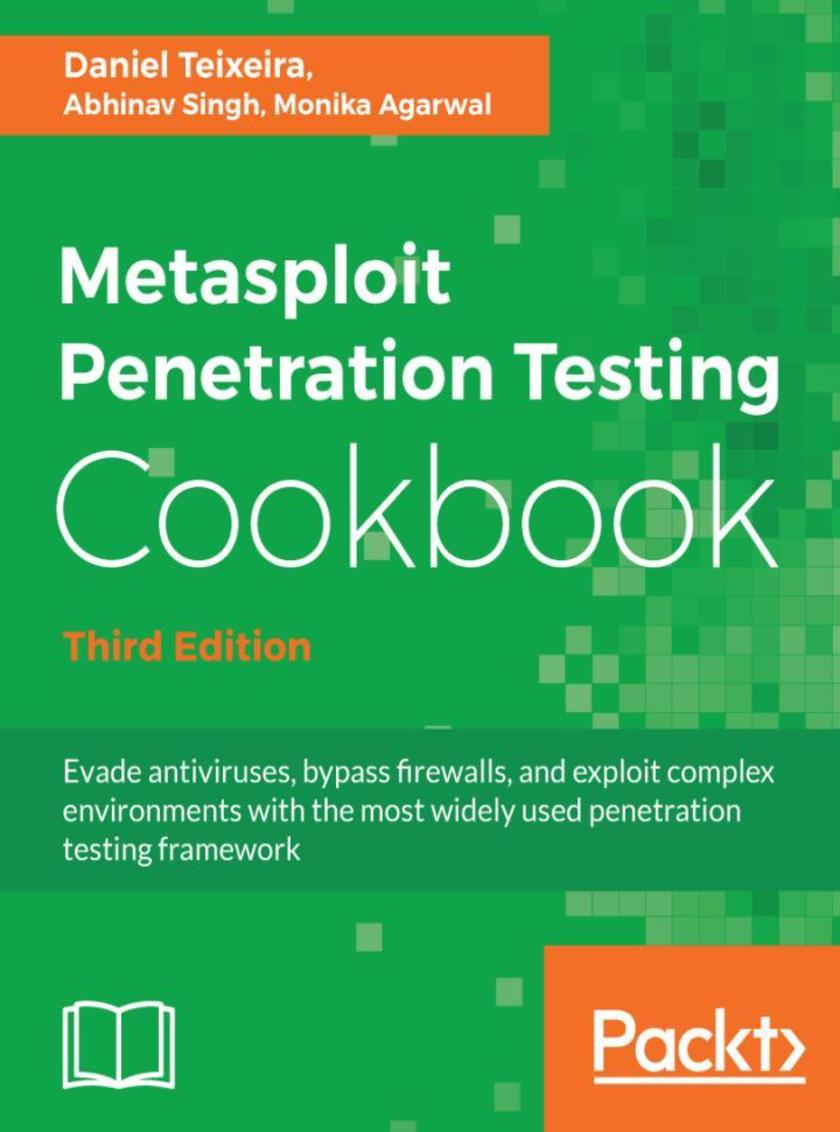
Metasploit Penetration Testing Cookbook - Third Edition
¥81.74
Over 100 recipes for penetration testing using Metasploit and virtual machines About This Book ? Special focus on the latest operating systems, exploits, and penetration testing techniques ? Learn new anti-virus evasion techniques and use Metasploit to evade countermeasures ? Automate post exploitation with AutoRunScript ? Exploit Android devices, record audio and video, send and read SMS, read call logs, and much more ? Build and analyze Metasploit modules in Ruby ? Integrate Metasploit with other penetration testing tools Who This Book Is For If you are a Security professional or pentester and want to get into vulnerability exploitation and make the most of the Metasploit framework, then this book is for you. Some prior understanding of penetration testing and Metasploit is required. What You Will Learn ? Set up a complete penetration testing environment using Metasploit and virtual machines ? Master the world's leading penetration testing tool and use it in professional penetration testing ? Make the most of Metasploit with PostgreSQL, importing scan results, using workspaces, hosts, loot, notes, services, vulnerabilities, and exploit results ? Use Metasploit with the Penetration Testing Execution Standard methodology ? Use MSFvenom efficiently to generate payloads and backdoor files, and create shellcode ? Leverage Metasploit's advanced options, upgrade sessions, use proxies, use Meterpreter sleep control, and change timeouts to be stealthy In Detail Metasploit is the world's leading penetration testing tool and helps security and IT professionals find, exploit, and validate vulnerabilities. Metasploit allows penetration testing automation, password auditing, web application scanning, social engineering, post exploitation, evidence collection, and reporting. Metasploit's integration with InsightVM (or Nexpose), Nessus, OpenVas, and other vulnerability scanners provides a validation solution that simplifies vulnerability prioritization and remediation reporting. Teams can collaborate in Metasploit and present their findings in consolidated reports. In this book, you will go through great recipes that will allow you to start using Metasploit effectively. With an ever increasing level of complexity, and covering everything from the fundamentals to more advanced features in Metasploit, this book is not just for beginners but also for professionals keen to master this awesome tool. You will begin by building your lab environment, setting up Metasploit, and learning how to perform intelligence gathering, threat modeling, vulnerability analysis, exploitation, and post exploitation—all inside Metasploit. You will learn how to create and customize payloads to evade anti-virus software and bypass an organization's defenses, exploit server vulnerabilities, attack client systems, compromise mobile phones, automate post exploitation, install backdoors, run keyloggers, highjack webcams, port public exploits to the framework, create your own modules, and much more. Style and approach This book follows a cookbook style with recipes explaining penetration testing steps with Metasploit. Plenty plethora of code and commands are used to make your learning curve easy and quick.




 购物车
购物车 个人中心
个人中心



